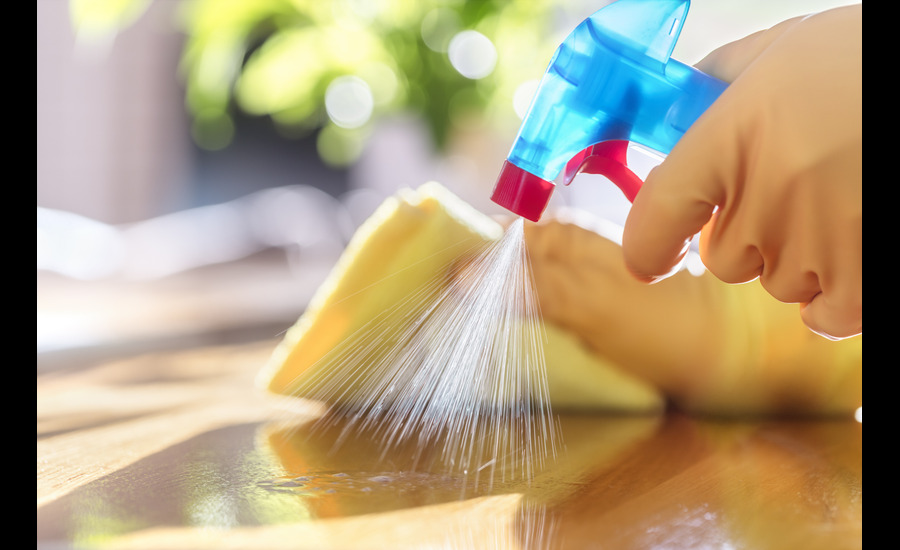The Complete Guide to Home Sanitizing: Essential Tips for a Healthier Living Space
Maintaining a clean and sanitized home is crucial for ensuring the health and well-being of your family. With the right approach, you can effectively eliminate germs, bacteria, and allergens, creating a safe environment where everyone can thrive. In this ultimate guide, we’ll explore practical tips and techniques for thoroughly sanitizing your house, helping you achieve a healthier living space.
Understanding the Importance of Home Sanitizing
Sanitizing your home goes beyond just cleaning—it involves using methods and products that eliminate harmful microorganisms from surfaces, reducing the risk of illness. Regular sanitization can significantly lower the chances of spreading viruses and bacteria, especially during cold and flu seasons.
Cleaning vs. Sanitizing: Know the Difference
It’s essential to distinguish between cleaning and sanitizing to ensure your home is truly safe.
● Cleaning: This process involves removing dirt, dust, and debris from surfaces. While cleaning is important for aesthetic reasons, it doesn’t necessarily kill germs.
● Sanitizing: Sanitizing reduces the number of bacteria on surfaces to a safe level, according to public health standards. This process typically involves using chemical or natural disinfectants.
- Interesting Fact: The average kitchen sponge contains more bacteria than a toilet seat. Regularly sanitizing sponges by microwaving them for one minute or soaking them in bleach solution can help reduce this contamination.
High-Touch Areas: Focus on Frequent Contact Points
Certain areas of your home require more frequent sanitization due to their high-touch nature. Focusing on these spots can help minimize the spread of germs.
1. Doorknobs and Handles: These are among the most frequently touched surfaces in any home. Wipe them down daily with a disinfectant wipe or spray.
2. Light Switches: Often overlooked, light switches can harbor a significant amount of bacteria. Include them in your regular sanitizing routine.
3. Electronics: Items like remote controls, phones, and tablets are handled often and should be sanitized regularly. Use wipes specifically designed for electronics to avoid damage.
4. Kitchen Surfaces: Countertops, cabinet handles, and appliance buttons should be sanitized after each use, especially after preparing food.
Choosing the Right Sanitizing Products
Selecting the appropriate sanitizing products is crucial for effectiveness and safety. Many options are available, from chemical disinfectants to natural alternatives.
● Chemical Disinfectants: These include products like bleach, alcohol-based solutions, and disinfectant sprays. They are highly effective at killing germs but should be used with care, following the manufacturer’s instructions.
● Natural Alternatives: For those seeking a more eco-friendly approach, natural disinfectants like vinegar, hydrogen peroxide, and essential oils can be effective. While they may not be as potent as chemical disinfectants, they’re safer for households with children and pets.
Tip: Always test a small area before using any new disinfectant on surfaces to ensure it doesn’t cause damage or discoloration.
Deep Cleaning and Sanitizing Different Rooms
Different areas of your home require specific approaches to deep cleaning and sanitizing. Here’s how to tackle each space effectively.
Kitchen: The Hub of Household Activity
The kitchen is where food is prepared, making it a prime area for bacteria to thrive. Regular sanitization is essential.
● Countertops and Cutting Boards: Use a disinfectant spray or a solution of bleach and water to sanitize these surfaces after each use. Consider using separate cutting boards for raw meat and vegetables to prevent cross-contamination.
● Sinks and Faucets: Clean sinks daily with dish soap and warm water, then disinfect with a bleach solution. For thorough sink sanitizing, don’t forget to disinfect the faucet handles as well.
● Appliances: Wipe down the exterior and interior of appliances like refrigerators, microwaves, and ovens. Pay special attention to areas that come into contact with food.
Bathroom: A High-Moisture Environment
Bathrooms are prone to moisture, making them a breeding ground for mold, mildew, and bacteria. Regular sanitizing can help keep these issues at bay.
● Toilets: Clean and disinfect the toilet bowl with a toilet cleaner or bleach solution. Wipe down the seat, handle, and surrounding areas with disinfectant wipes.
● Showers and Bathtubs: Scrub tiles and grout with a mildew remover to prevent mold growth. Use a daily shower spray to maintain cleanliness between deep cleans.
● Sinks and Mirrors: Sanitize the sink basin and faucet handles regularly. Use a glass cleaner to keep mirrors streak-free.
Living Areas and Bedrooms: Spaces for Rest and Relaxation
Living areas and bedrooms may not require as frequent sanitization as kitchens and bathrooms, but regular cleaning is still important.
● Upholstery and Carpets: Vacuum regularly to remove dust and allergens. Consider using a fabric-safe disinfectant spray on upholstery and carpets, especially if you have pets.
● Bedding: Wash sheets, pillowcases, and blankets weekly in hot water to kill dust mites and bacteria. Don’t forget to sanitize mattress covers and pillow protectors.
● Air Quality: Regularly replace air filters in your HVAC system and consider using air purifiers to reduce airborne contaminants.
Fun Fact: A typical mattress can double in weight over 10 years due to dust mite infestation and accumulation of dead skin cells. Regularly sanitizing and rotating your mattress can help prolong its life and maintain hygiene.
Maintaining a Sanitized Home: Consistency is Key
Keeping your home sanitized requires ongoing effort. Develop a routine that includes daily, weekly, and monthly tasks to ensure all areas are regularly addressed.
● Daily: Focus on high-touch areas and surfaces that come into contact with food or hands.
● Weekly: Deep clean bathrooms, kitchens, and common areas. Launder bedding and sanitize frequently used items.
● Monthly: Schedule time for less frequent tasks, such as cleaning windows, washing curtains, and organizing storage spaces.
Conclusion
Sanitizing your home is an essential part of maintaining a healthy living environment. By understanding the difference between cleaning and sanitizing, focusing on high-touch areas, choosing the right products, and developing a consistent routine, you can effectively protect your household from harmful germs and allergens. A clean and sanitized home is more than just a place to live – it’s a sanctuary for your family’s health and well-being. Embrace these tips, and enjoy the peace of mind that comes with a truly healthy home.






